Why does aurynn shaw write in public?
By writing these words, by exploring myself in public, I’m part of the future, of history, and a conversation worth having.
If what I see in myself reminds you of your own actions, then together we’ve made something better. That’s worth a great deal to me.
Resentment, or, on Trains is a stunning example of that.
I Know a Place is a 2017 electropop track from the band MUNA, on their album About U. It’s full of energy, a challenge to stay still to.
A year later the band released About U: One Year On, with an acoustic version of the song: it’s some kind of wonderful, in a completely different way.
So, not a case of covers by someone else, better than the original, but rather one in a long tradition of artists reinterpreting their own work.
Another example: Political by Spirit of the West, later rerecorded in a way best described as “upside down”. I remember that being a topic of some fascination for me and my friend Tim; it broke our brain, just a little, the summer it came out.
I have a window fan in my bedroom that, in the warm season, I have set to turn on automatically at 9:00 p.m. via a Wemo outlet.
That’s great. Except when it’s not, because the weather turns cold, and the last thing I want to do is suck 14ºC air into my bedroom.
So I created an iOS Shortcut to turn the fan on only if the temperature is more than 17ºC.
The Shortcut uses the Weather app on the phone to get the current weather, and then checks to see if the current temperature is more than 17ºC; if it is, it turns on the fan:
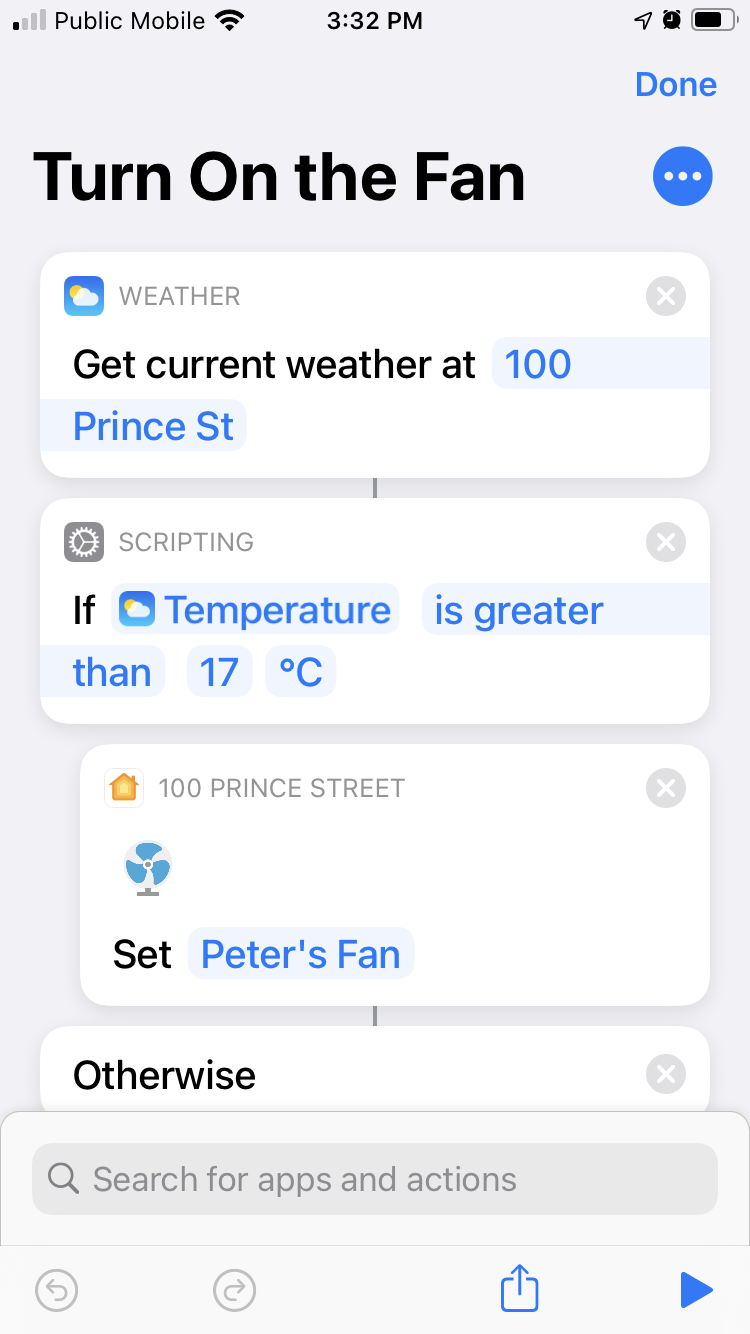
I then added this to a “Personal Automation” in the Shortcuts app, to run every day at 9:00 p.m.:
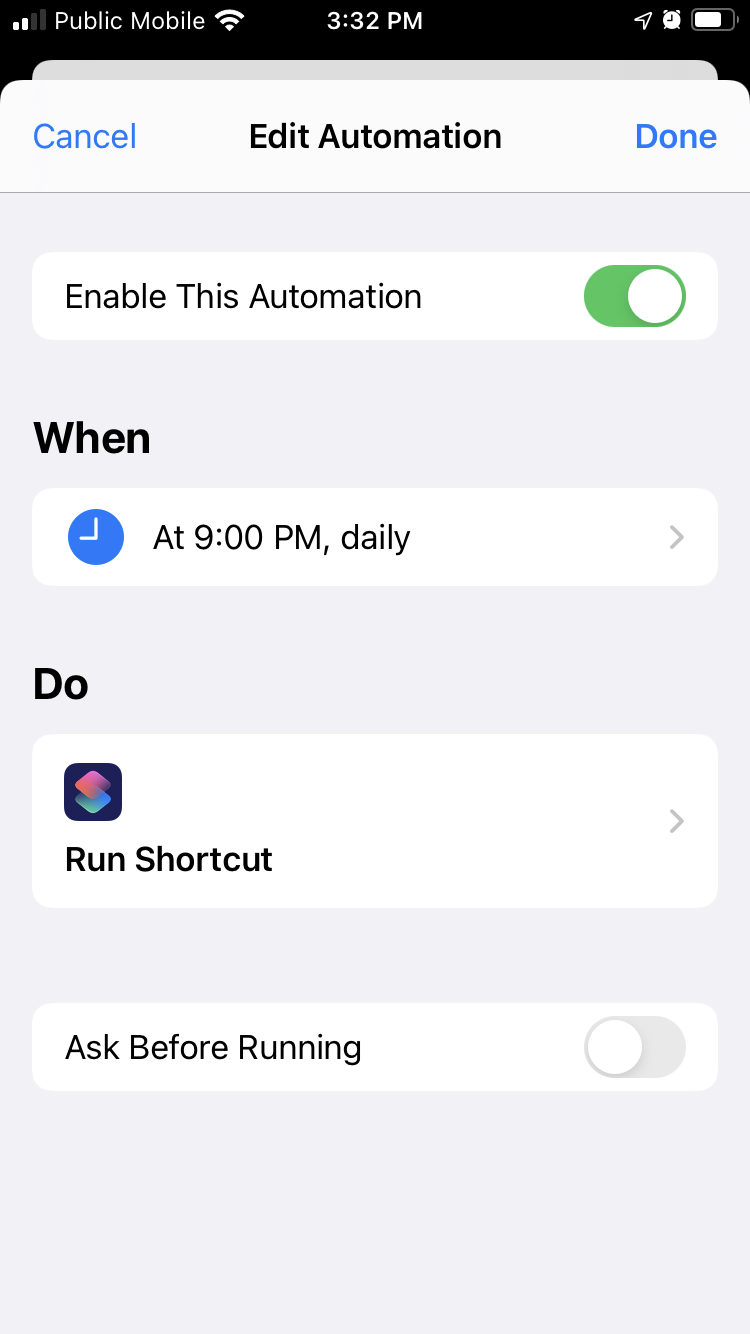
I could make this smarter if I had a way of reading the indoor temperature too (my Nest thermostat knows the temperature, but because of Balkanization, it won’t talk my iPhone).
It’s Bike Week in Charlottetown this week, a celebration of all things cycling.
To help highlight the utility of bicycles for running everyday errands, Mayor Brown headed off this morning for a cycle, and I tagged along.
Starting from Outer Limit Sports, we stopped at Prince Street School, St. Jean School, Tim Horton’s, and Sobeys, navigating city streets that started off wet and slick and ended up dry as the sun came out and the day brightened.
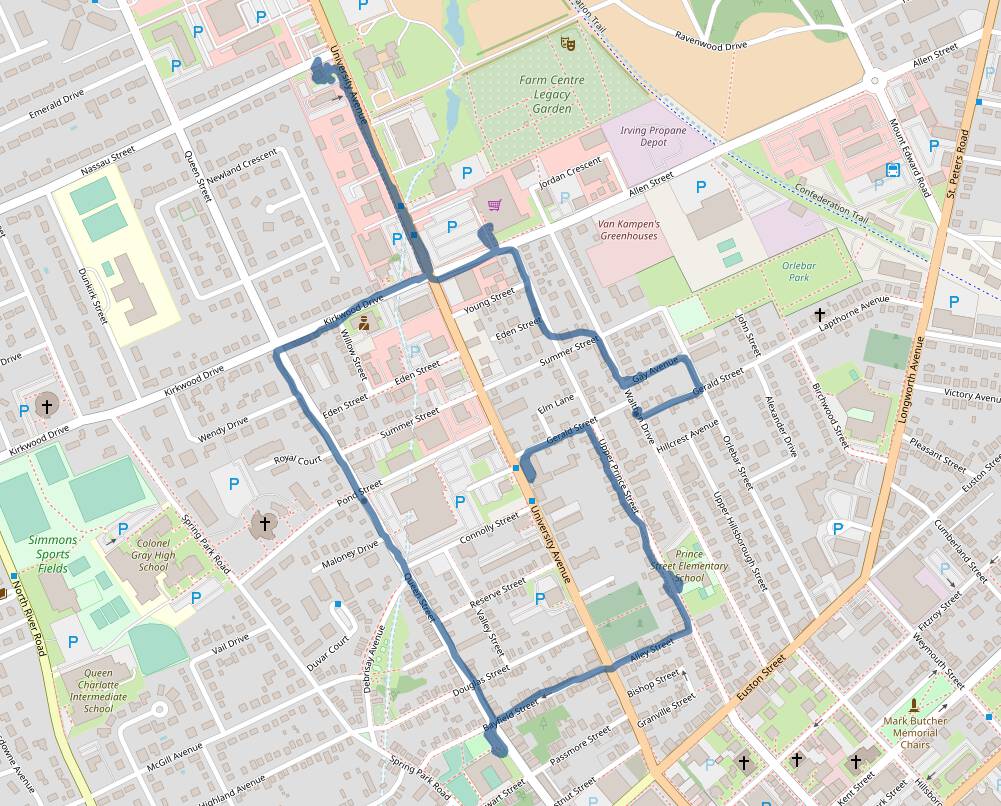
In recent memory Charlottetown hasn’t had a mayor who’s as active a cyclist as Mayor Brown, and the city is better for it.
Here’s the Mayor and comms person Robbie Doherty at the tail end of our journey:
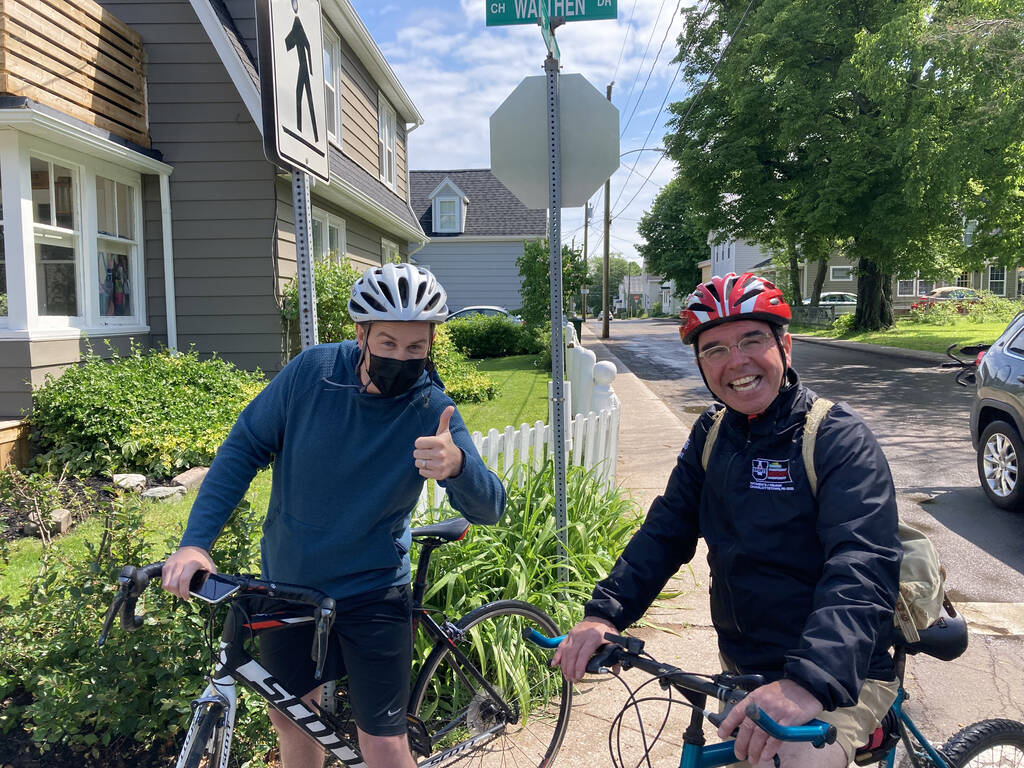
The word cadence has emerged into the fore of late, spurred, I think, by email newsletters and the question of how often they get sent.
Meanwhile, my haircut cadence has emerged as 104 days: leaving a meeting downtown today I was stuck with the sudden urge to be shorn and so I headed to Ray’s. At the time I didn’t know that it had been 104 days since my last haircut, which, in turn, had been 104 days since the one before that.
Ray’s was pleasantly empty, so I got sat right down. “Off my ears, out of my eyes, off my collar,” as usual. About the vaguest directions you can imagine.
I suppose I should pencil in a haircut for September 28. Or just have confidence that my cadence juju will carry me there.

Matt Webb doesn’t write about horses:
My personal algorithm for new ideas appears to include: think about nonsense for longer than most others are prepared to tolerate.
On my ride over the Hillsborough River last night I spotted a bridge piling I’d never seen before:
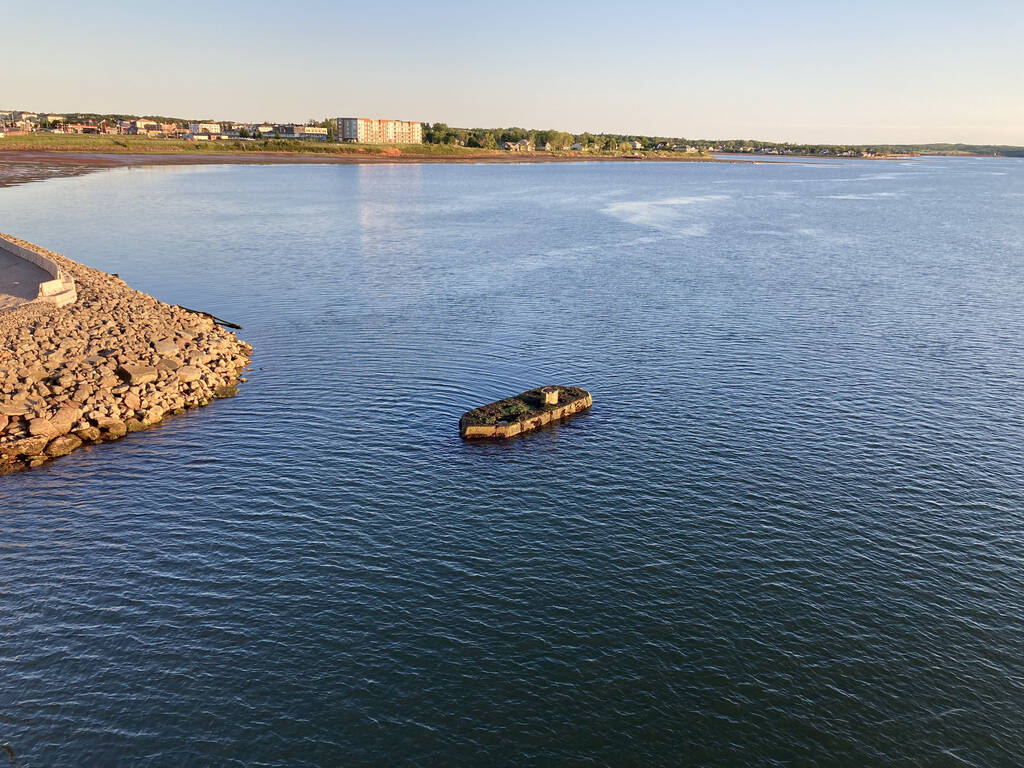
When I got home I checked to see what low tide was, and found that it had happened 20 minutes previous and was 1.52 feet.
This got me curious: what are the extreme tides predicted for Charlottetown for this summer?
So I used XTide to find out.
The lowest tide between the summer solstice and the autumnal equinox will be 0.14 feet, and will occur on June 25 at 6:21 p.m. and again on June 26 at 7:12 p.m.
The highest tide this summer will be 9.38 feet, and will occur on June 26 at 12:12 p.m.
So both the lowest and the highest tide of the summer will occur on June 26: the tide at lunchtime will be 9.24 feet higher than the tide just after supper.
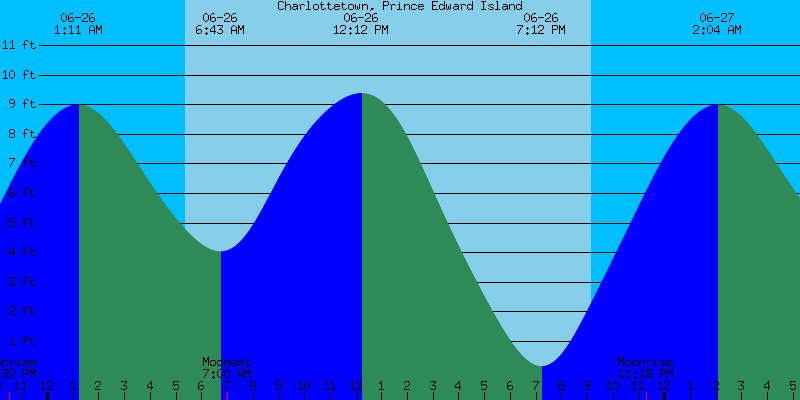
Last week the final paving on the Stratford section of the new Hillsborough Bridge Active Transportation Path was completed, meaning you can now walk, roll, or cycle from end to end. I rode over and back last night for the first time, and shot some video on the ride back, showing the newly-completed section.
The ride is a noisy one: it’s a functional pathway, not a peaceful one. But the views are fantastic, the pathway smooth, removed from vehicle traffic, and well-designed, and the dramatic improved reach of safe active transportation infrastructure the path represents is immeasurable.
The ride over took me 7 minutes from Grafton & Water to the Esso corner.
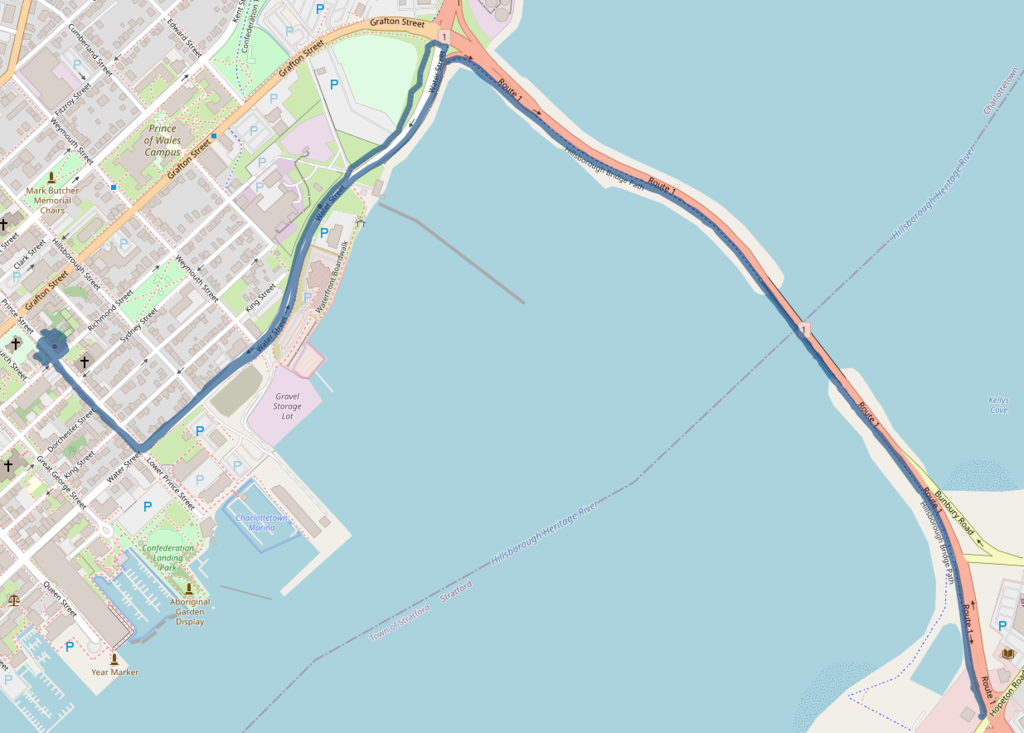
 I am
I am